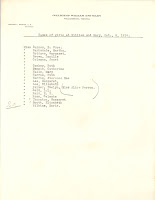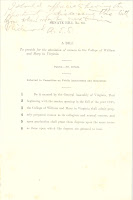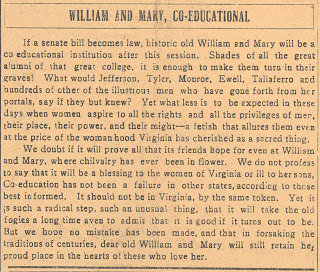Lilian Hope Baines, Martha Barksdale, Margaret Florence Bridges, Lucille Brown, Janet Coleman, Ruth Taylor Conkey, Catherine Dennis, Mary Haile, Florence Mae Harris, Ruth Harris, Elizabeth Lee, Margaret Lee, Evelyn Palmer, Alice Person, Edna Widgen Reid, Laura Louise Reid, Celeste Ross, Elizabeth Scott, Margaret Thornton, and Marie Wilkins.
 This list is from the document "Names of girls at William and Mary, Oct., 8, 1918" from the office of Herbert L. Bridges. Bridges served as Registrar and Secretary of the Faculty from 1907 until 1928 and held several other positions at the College as well during his tenure from 1881 through 1933. Click image to enlarge.
This list is from the document "Names of girls at William and Mary, Oct., 8, 1918" from the office of Herbert L. Bridges. Bridges served as Registrar and Secretary of the Faculty from 1907 until 1928 and held several other positions at the College as well during his tenure from 1881 through 1933. Click image to enlarge.
Other lists also include Alice Burke, Winifred Goodwin, Emily Hall, and Alice Powers as part of the first class of women. President Lyon G. Tyler would later refer to these women in a letter to Catherine Dennis as the "noble band of girls who broke the ice at William and Mary, and led the way in the emancipation of their sex." Still, as of September, 19, 1918, they were also just the latest in a long line of new students to College - facing the challenges of classes and a new social environment.
 ry.
ry.A copy of the Strode Bill that allowed women to attend William and Mary from the records of President Lyon G. Tyler. Click image to enlarge.
This post was composed by Jordan Ecker and Kate Hill.
For additional information about the first women students at the College of William and Mary see: When Mary Entered with her Brother William: Women at the College of William and Mary, 1918-1945 by Laura F. Parrish; "The Petticoat Invasion": Women at the College of William and Mary, 1918-1945; The Martha Barksdale Papers; and the Women at the College of William and Mary page on the Special Collections Research Center Wiki.






